Science has come a long way since ancient times, but it's easy to lose perspective. Just how did people live before the recent, modern academic consensus? Turns out, things got pretty wild!
Hot, Steaming Beaver Bollocks
Birth control is a tricky topic: Since the beginning of time, baby-making without making babies has been a real challenge. All around the world, people tried to manipulate nature's plan. Many failed, including old-timey Canadians! What was their silly scheme?
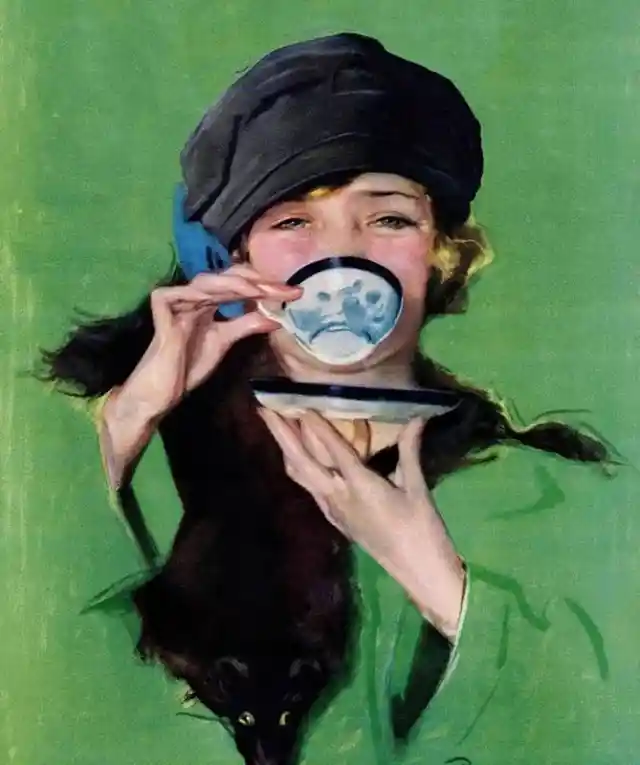
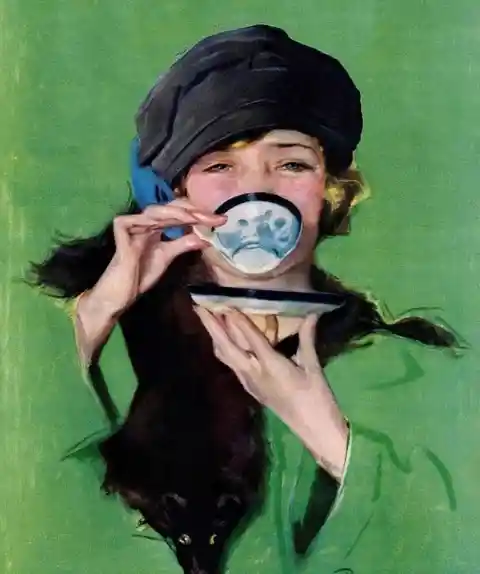
Way back when, women decided to combine their love of tea with beaver testicles. The delightful brew was said to stop pregnancy, and many gave it a sip at snack time. With an excess of beavers, there was no stopping lusty Canucks! Hopefully, it was tasty, since there was no science involved — none, whatsoever.
Stay far, far away: The worst-of-the-worst scientific cure alls of yesteryear, next!
Munching Chalk For The Glow
In simpler centuries, working-class people spent a lot of time outside. That meant lots of sunshine, but it wasn't really thought of as a luxury. Spray tans weren't even a fad yet! Realistically, a real tan meant a lack of wealth.


To make sure that pasty white look had a little insurance, people turned to chalk. No, not as powdery makeup on the outside. It was a cure for melanin formation, from the inside! Women tried this trick in the 1700's and 1800's, but it made them sick. Readers shudder today, thinking of the taste!
Super Bloody Detox
Before modern medicine, people certainly had a sense that things could go terribly wrong inside the body. Unfortunately, the diagnosis was never so clear. For many ailments, one cure-all was prescribed: Draining blood, and lots of it!
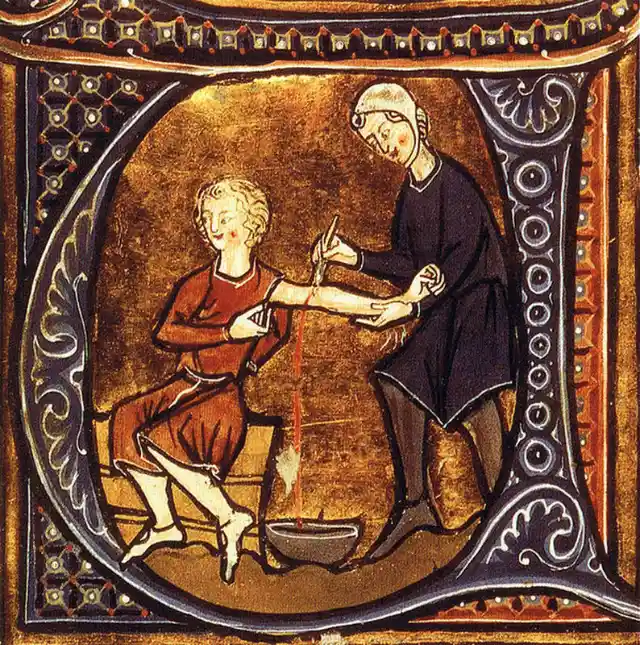
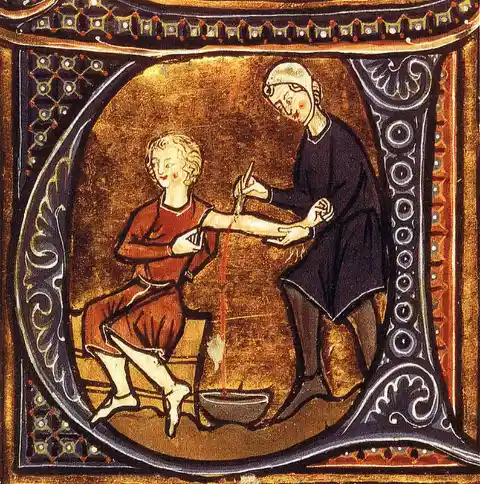
To cure just about anything, doctors tried to bleed patients back to good health until the 19th century. Ever since Hippocrates observed that women menstruated to cleanse their body of bad elements, bloodletting was popular. Why argue with the Father of Medicine? For about 2,000 years, it was one of the most frequently performed procedures! While that might sound crazy, it's not the worst idea anyone ever thought about. What did doctors think about stinky, deadly tobacco back then?
Tobacco As Medicine, Over and Over
Green, leafy, with a little bit of buzz, it seems that humankind has been trying to find a legitimate use for this special plant since the day it was discovered. What were some of its greatest hits, to date?
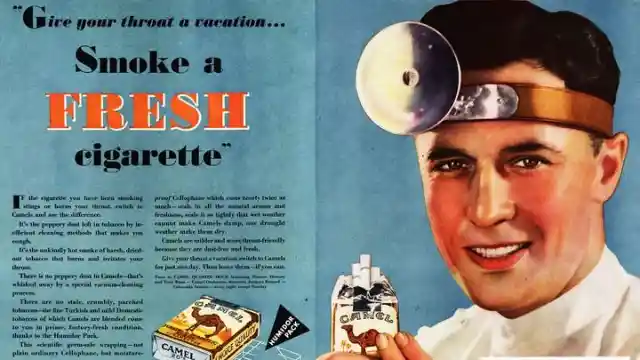
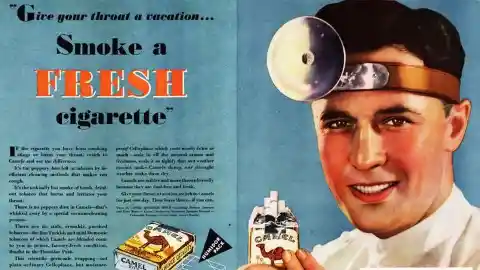
In the 17th and 18th centuries, Tobacco fumes were prescribed as an enema. Later, people decided "don't blow smoke up my butt" was a better idea. But was that the end of its medicinal use? Nay! The plant was long believed to be so mild that doctors suggested cigarettes to pregnant women for anxiety and weight management. Shocking, but true!
Kids Loved Heroin Cough Syrup
Heroin does the body good — or so doctors thought, at first! An opioid-like no other, the medical field was initially excited at the prospect of this new ingredient for everyday use. Miracle in a bottle, finally?
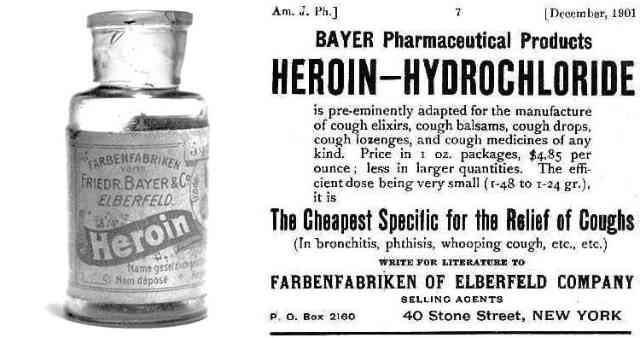
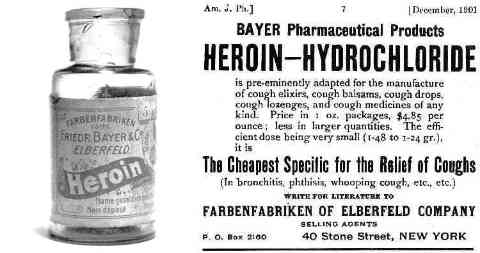
Heroin could do oh so many things, it seemed! Those tricky childhood coughs, for example, could finally be stopped to sleep through the night. Famous drug firm Bayer g0t into the craze, actively advertising it as a children's cough remedy in the 1920s. Luckily, customers only associate their trusted brand with aspirin, nowadays!
Graham Crackers for Abstinence
Graham crackers are indispensable at campfires to have real s'mores. Outside the woods, others may just enjoy them as a light snack on a diet. Not quite a cracker, not quite a cookie, does anyone really know the history of this treat? Oddly enough, Nabisco's signature product was once associated with sexual morality.
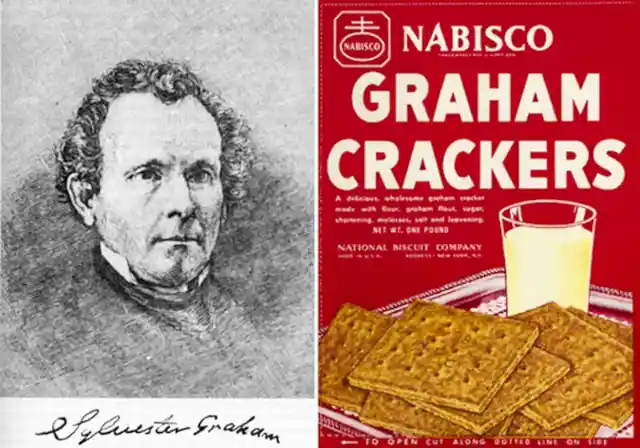
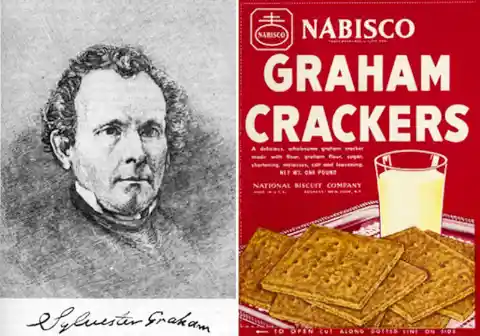
Sylvester Graham was a 19th-century preacher who founded a movement to stop masturbation. Among his wacky recommendations to stop the compulsion, a proper lifestyle included vegetarianism, alcohol abstinence, and a recipe for the crackers that would eventually be named after him. Little did he know they were mostly destined for cheesecake, in the big scheme of things! On the topic, one other baking item has a funny history few know about. What rich, greasy ingredient did ladies of honor use for alternative, off-label purposes?
Chicken Crap Rogaine
It happens to the best of men — and women. Going bald has always been a stage of life, and little could be done before the modern era of hair-plugs and grafting. Sure, there were wigs. But people still dreamed of more!
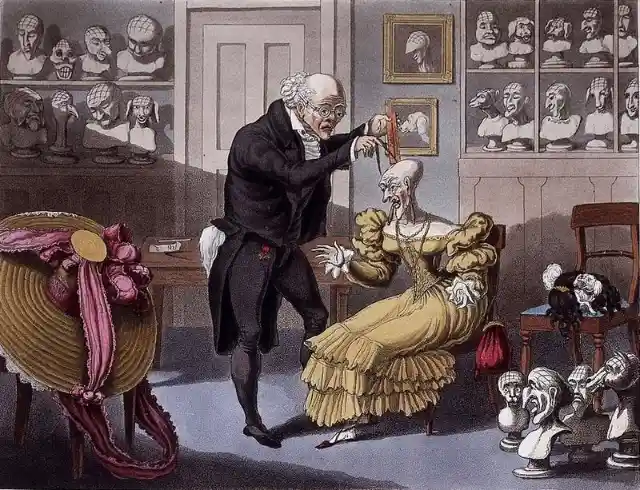
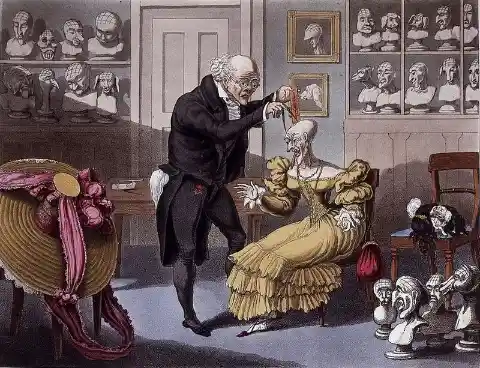
One way to fix a hair scare in the 17th century was chicken poop, mixed with lye. People felt the dreaded affliction could be cured by massaging this harsh solution on the scalp. And so, they did precisely that. Sad, bald-headed customers waited and waited. Sadly, nothing grew back!
Cocaine For Depression
At the beginning, like most hardcore narcotics, cocaine seemed like a powerful, promising substance. The great father of modern psychology, Sigmund Freud, recommended the pick-me-up for depression!


He even tried it on himself! Freud observed: “Long intensive mental or physical work is performed without any fatigue. This result is enjoyed without any of the unpleasant after-effects that follow exhilaration brought about by alcohol...One senses an increase of self-control and feels more vigorous and more capable of work...One is simply normal, and soon finds it difficult to believe that one is under the influence of any drug at all.” Little did he know about the real addictive danger, at the time!
Read More: The poisons professionals actually told women to ingest for beauty, booty, and killer baby blues!
Secret Ingredient: Radioactive Radium
Without the FDA to monitor food or drugs — or anything — people were stumbling in the dark for thousands of years. After the ole' scientific method was worked out, humans had a lot of sudden discoveries to put to use. For example, Radium was an element found by Marie Curie in the 19th century. Its mysterious properties intrigued many — especially cosmetic companies!
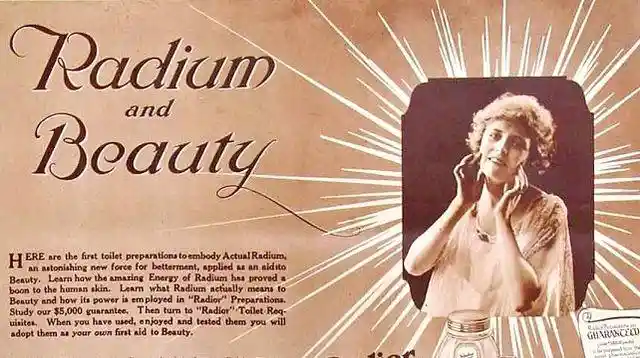
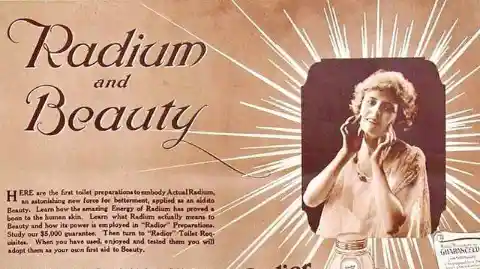
Hard to believe, but radioactive was once a marketing term. Between the turn of the century and 1920, all kinds of radium-infused products were said to improve vitality and circulation, eliminate fat, firm skin, even reduce pore size. Right at the drug store, no less! History buffs may recall that Marie herself died of radiation poisoning. Major mistake for face cream! For the female form, there were equally deadly ads in public. What was the first trendy crash diet out there, back in the day?
Tapeworms, Diet Edition
Feeling chunky? Try a parasite, said the Victorians. As crazy as it may sound, women were offered a weight loss solution to swallow a pill containing a live tapeworm egg. What, pray tell, was the theory behind that?
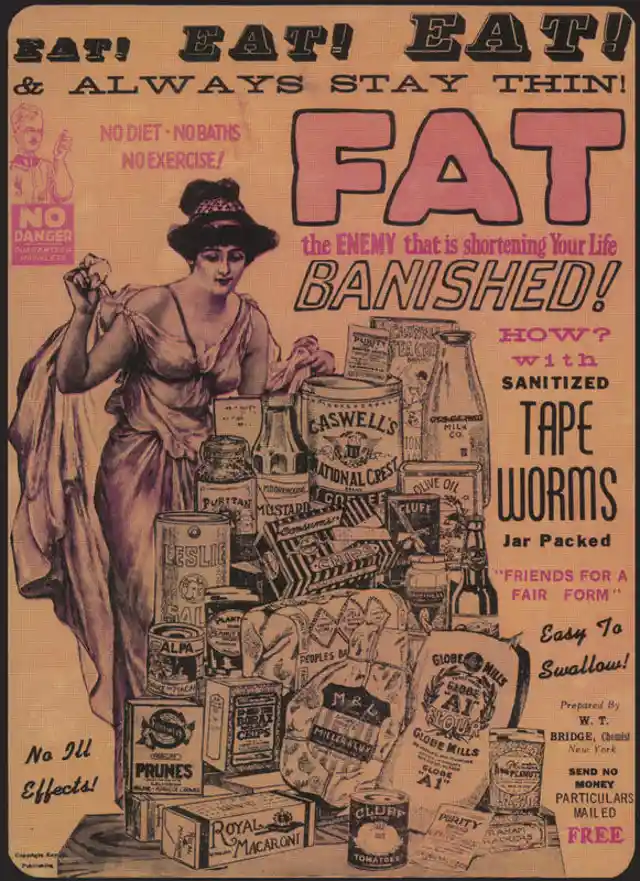
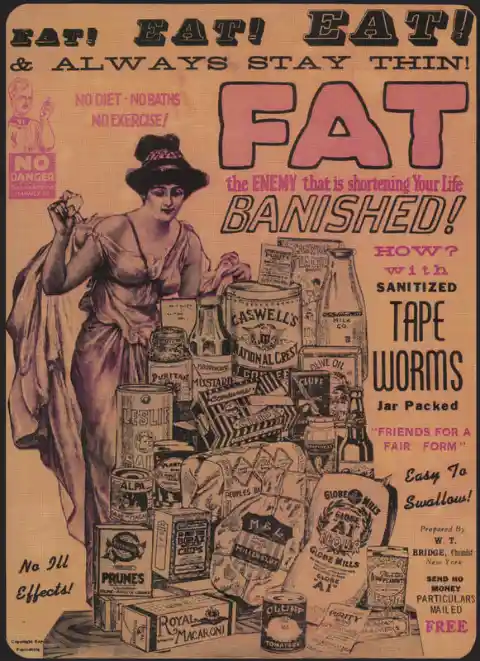
Clever Victorians imagined eating normally, and never gaining weight. The tapeworm could get rid of all the calories! One guide read: “If stout, [a girl] should eat as little as will satisfy her appetite; never allowing herself, however, to rise from the table hungry.” Combined with the worm, it seemed genius. But sadly, as a diet aid, the results were short-lived. Eventually major organ damage and even death outweighed the benefits! Were old-timey cures for luscious locks better, at least?
Maybe She's Born With it, Maybe it's Lard
Lard is used mostly for cooking these days. But once upon a time, it was the only convenient product around for sculpting the giant 'do women liked to wear on their heads. It was all wig, of course. But wigs need a lot of upkeep!


Without access to hair gel or mousse, lard was the obvious choice. But this all occurred in the days before general hygiene was understood. As a result, beautifully styled wigs attracted rats! Women attached the fake hair to their heads for weeks at a time, and this was bad news when critters showed up. Sleeping with hair cages was thought to be the solution, instead of washing! Now body hair care has its own strange and dangerous history. What in the world did gals do before the modern razor?
Quickie X-Ray Hair Removal
Human females have not always removed body hair. Frankly, some still don't! When it became a fad in the early 20th century, though, high tech met hair tech. Of all things, X-ray machines were utilized for baby smooth skin. Yikes!
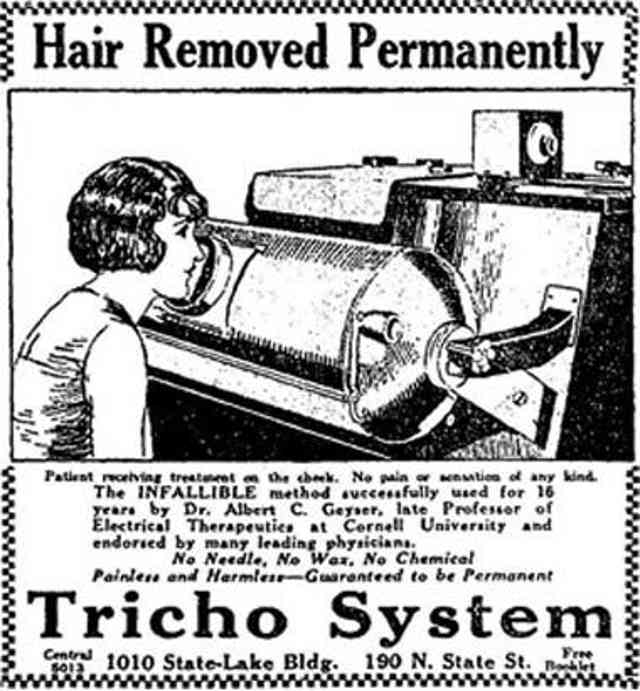
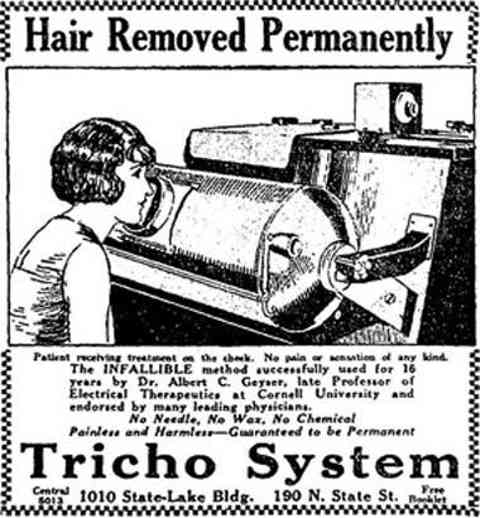
Unsuspecting consumers saw marketing for hair removal with the Tricho System in their local papers. In the early 20th century, it was called an award-winning invention! A popular booth at international exhibitions of the times, customers lined right up to try it out at their peril. Now, much more is known about X-rays and health. But once upon a time in 1925, this deadly machine won at the Paris Exposition General Commercial!
Eagle Poo for Birthing Pains
Shockingly, medieval women often died in childbirth. It was an extremely risky activity! But even in the best of scenarios, it was terribly painful. Before the epidural, what did women do in the middle ages to ease the labor?
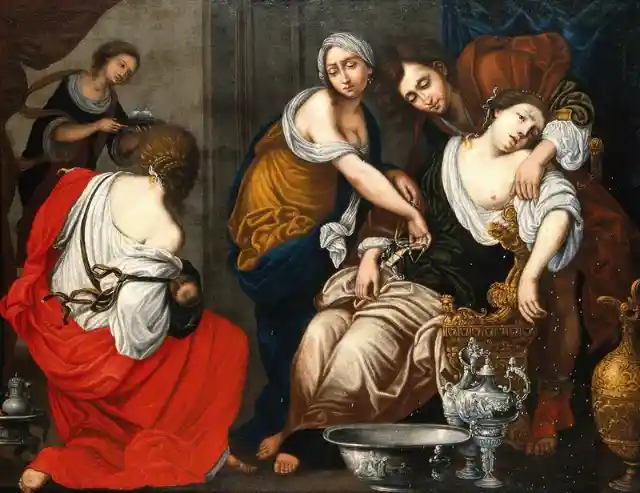

People had compassion in ancient times, even if they lacked real science. Somehow, people thought that eagle droppings combined with oil and vinegar might help. Why this concoction in particular? That knowledge seems to be a lost art. Still, records show that many women were subjected to poop marinade in the worst hour of their lives! After birth, there were plenty of chores to do for the little ones. How did things get even grosser, at that stage?
Cleaning Clothes With Pee
Laundry was a seriously time-consuming task before the miracle of the washing machine. Looking to make things more efficient, how did maids and housewives in the 1600's tackle those endless linens?
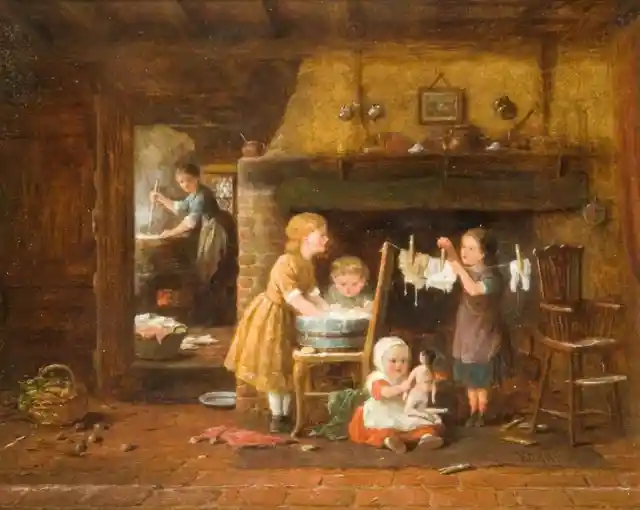
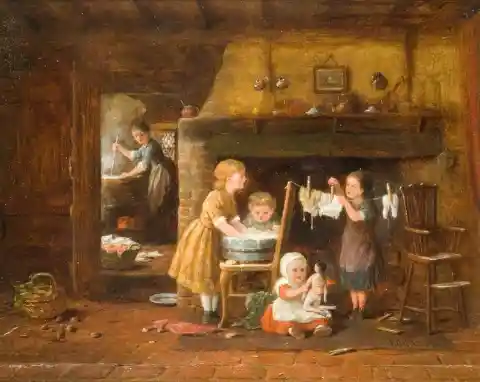
One 1677 guide recommended a mix of lye and pee. According to The Compleat Servant-Maid: "Before that, you suffer it to be washed, lay it all night in urine, the next day rub all the spots in the urine as if you were washing in water; then lay it in more urine another night and then rub it again, and so do till you find they be quite out." Who doesn't love that fresh laundry smell?
Pupil Enlargement With Poison
The eyes are the window to the soul, as they say. Taking this to heart, Italian women used a toxic plant to make their pupils look bigger during the Renaissance. Odd as it may sound, it's true! What was their thought process?
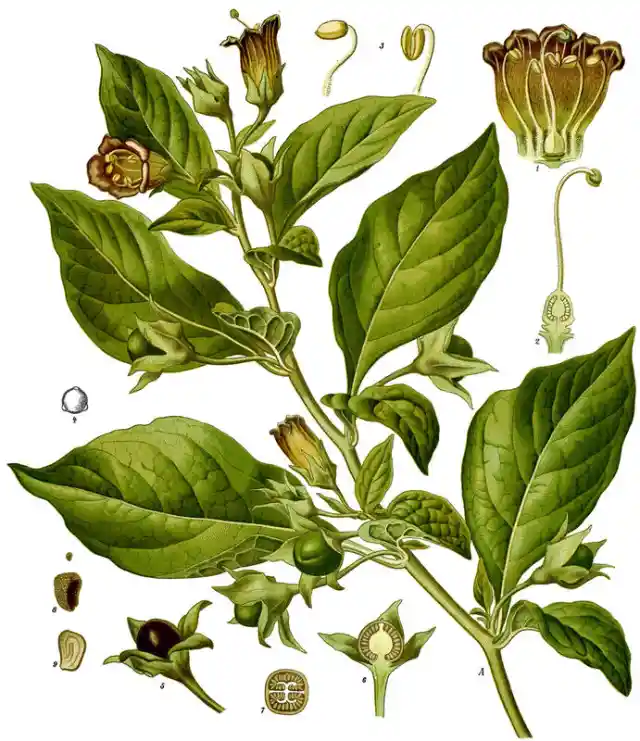

Apparently, there was simply a beauty fad that told women larger pupils were more alluring. And who didn't want to be that? It caught on, and Belladonna was ingested to achieve the look. The plant has hallucinogenic properties, as well as the potential to be a lethal poison. Fun fact: Royals loved it to kill off their rivals!
Dead Guy Dentures
Losing teeth was a fact of life after a certain age, before fluoride saved the world. Smiles could get pretty checkered, and eventually painful. Fact: It's hard to bite into an apple with three rotting teeth!
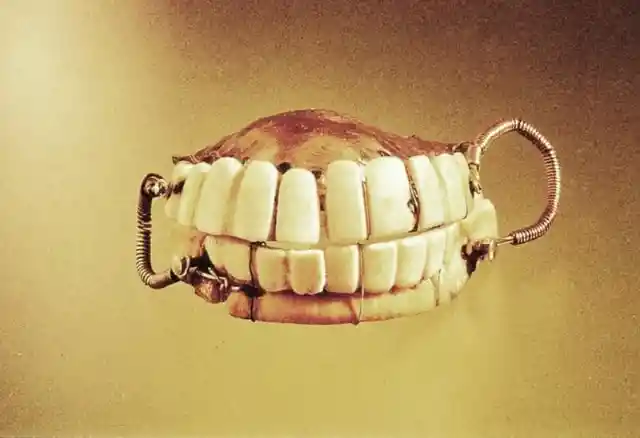
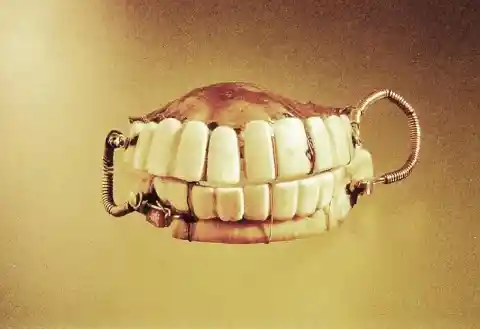
How did the toothless find usable substitutes in the 1800s? Necessity is the mother of invention, and dentures were created. Conveniently, the teeth of dead soldiers were available! And plenty of them, given the events going on at the time. Without quality dental care or hygiene knowledge, sugar was a real grin killer in past eras. Using extra human teeth just seemed like the logical answer!
Contraception by Crocodile Dung
Cleopatra had some sensual affairs, legend says. But how did she plan them responsibly? To prevent pregnancy in Egypt, one very special stinky ingredient from the Nile river was procured. A modern method, it was not!


Ladies tried inserting balls of crocodile dung inside their lady canals to stop pregnancy in old Egypt. This had one main advantage: It was lying around everywhere! Not a rare ingredient, but not effective, either. As history shows, lots of babies were born despite efforts to dine and dash. Along with mummification and cat worship, the fad has faded away into eternity!
Hot, Heated Hemorrhoid Removal
Hemorrhoids are swollen veins in the no-no zone. That's right, the lower anus and rectum! It cannot be fun to deal with, but humanity has had them since the beginning. What's an ancient to do, in that case?


Thankfully preventable today, the ancients had little knowledge about hemorrhoid formation. How exactly did they deal with the malady, without even an aspirin to dull the pain? Medieval documents reveal that surgeons would treat severe cases by burning them off. Kill it with fire, it was! Using a cautery iron, 12th-century medicine did its best. Still, it sounds like the absolute worst!
Snail Slime for Coughing Fits
Snail goo has recently made a splash in the beauty world, thanks to the Korean fad. Allegedly, it's a good moisturizer for the face. It's actually not a new ingredient to soothe the body. What was it used for in the 18th century?
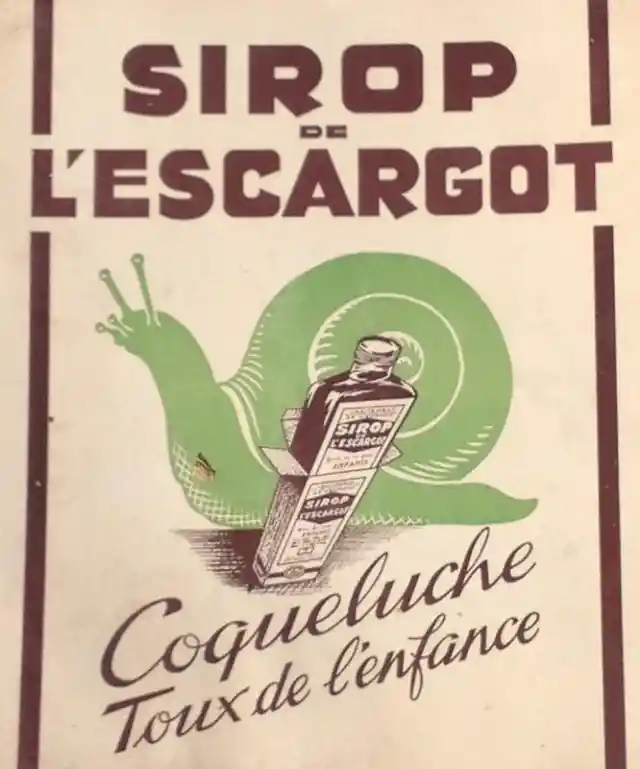
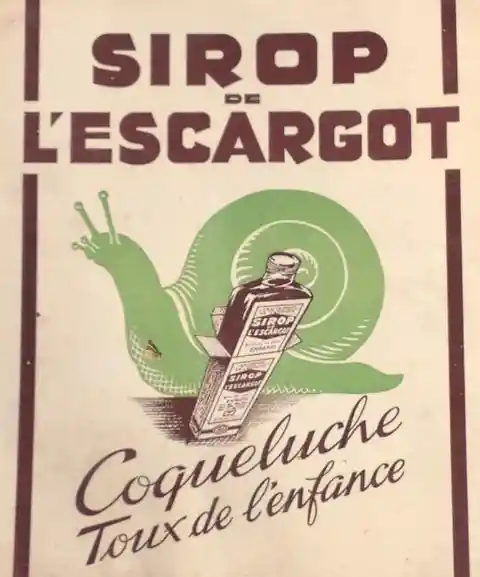
A slimy cough cure over the counter, of course! The logic was all about that slime, too. It was perfect to coat the patient's inflamed throat, and provided some relief. But even though the recipe included sugar, it's not surprising that drug companies figured out alternatives. Anything else, please!
Mouse Brain Toothpaste
Ancient Romans were very beauty conscious, as a whole. And they loved, loved, loved a bright white smile! The only problem was, toothpaste was a bit primitive. What was their preferred mix, during the empire?


As it turns out, they used mouse brains and baking soda. People today still use baking soda, because it does have hygienic and whitening properties. But the rodent? Pliny the Elder was to blame. As one of the philosophers exploring ancient science, he just thought it was a fantastic idea. And so, the people brushed!
Sulfur Freckle Fade
Freckle-faced kids often feel self-conscious about their beauty spots. It's nothing new, and skin lightening creams are risky products many still use against the best advice. What untested nonsense was tried a century ago?
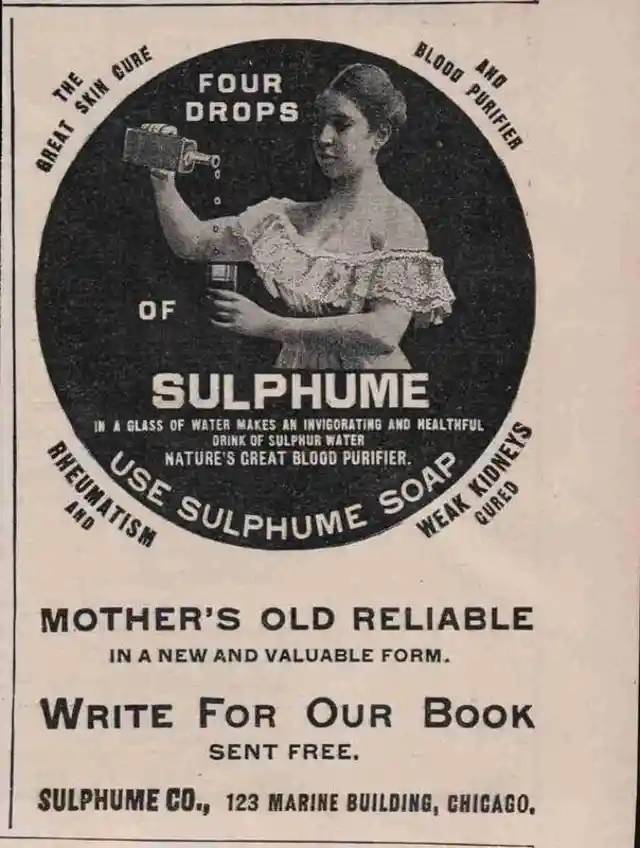
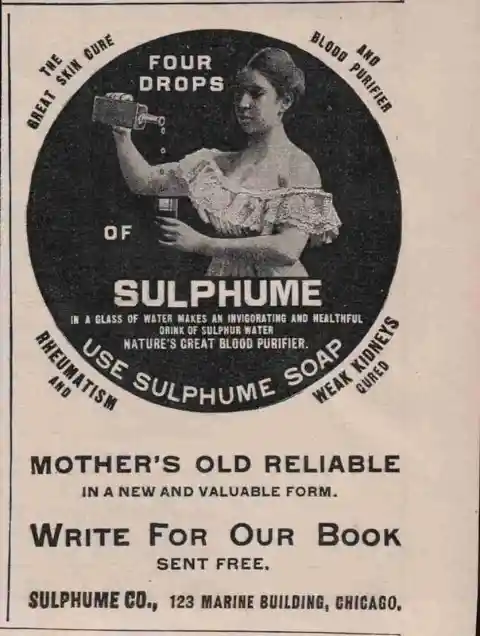
People used sulfur, that's what. Many today might ask if freckles are even a problem at all. But trends back then were different, and this volcanic potion was tried to get rid of the dots. It was overkill, but small amounts of the substance are indeed recommended today for something else. It's an acne cure for many, doctor endorsed!
Burning Wounds Like Mad
During the Vietnam war, superglue was used to close dangerous gashes in a snap. In the ER, it's easy to give patients stitches, expertly and carefully. But before modern methods, how did the ancients deal with big, bloody cuts?


Wounds were totally burned shut, without anesthesia. Despite the mega ouch, it was smart thinking. Without any high tech method to stop the gushing, a glowing, red hot poker was the only tool at hand. Did it leave a neat, small scar? No. But hoping for the best, it's all they could do!
Urine to Freshen Breath
The ancient Greeks were all about pleasant experiences. Exercise to tone the body before it was popular, luxurious clothes draped for everyday fashion, fragrant oils to perfume the body. What about morning breath, though?


In the time of Zeus and Hera, the Greeks used urine as mouthwash. Hard to believe, but it was a trendy trend! Plus, the Romans loved it, too. Could they both be so wrong? Urine does contain ammonia, which has some medical application. But how much, and why this? There had to be a better source, friends!
Poop Face for Pale Face
Pale was just so chic, for oh-so-long. For centuries and centuries, ladies couldn't get enough of that look. And they were willing to resort to any cream, any way, to keep things light. That included feces!


Crocodile dung was used when dry to create a pale visage. Less toxic than previous materials, it had a good run for awhile. Ladies later created a fresher sounding toner. They chose strawberries and wine for the base, and hydrated their faces hoping to stay pale. The science on that one was murky, but it was certainly less stinky!
Kotex, Itchy Edition
Since the beginning of homo sapiens, there's been a special time of the month. Roman women were clever enough to make tampons to deal with the flow. But without current manufacturing practices, what did they use to make things delightfully absorbent and fresh?


Wool’s well known characteristic is its itchy nature. Yes, it's warm. But the downside is hard to ignore! For a while, it was used as a rough tampon in Rome. Less than ideal, perhaps — but the other options included paper and grass. In 1933, the modern version was finally brought to shelves. Thankfully, wool-free!
Python Bile for Genital Ulcers
Animal bile is popular in China today to deal with a variety of ailments in TCM, or Traditional Chinese Medicine. While it has no scientifically proven positive effects, it does have a long history of use in the region. Even for lady problems!
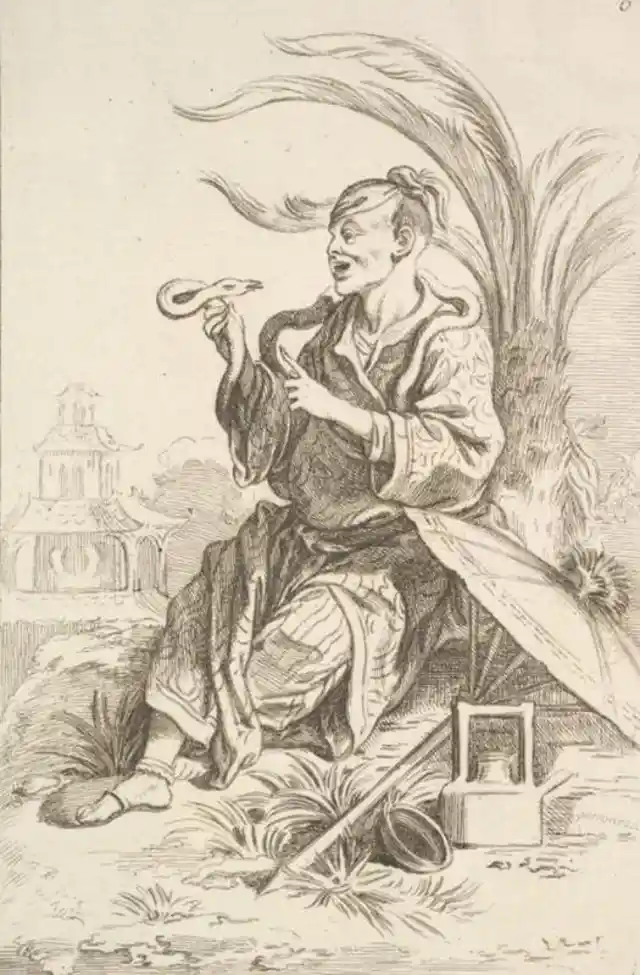
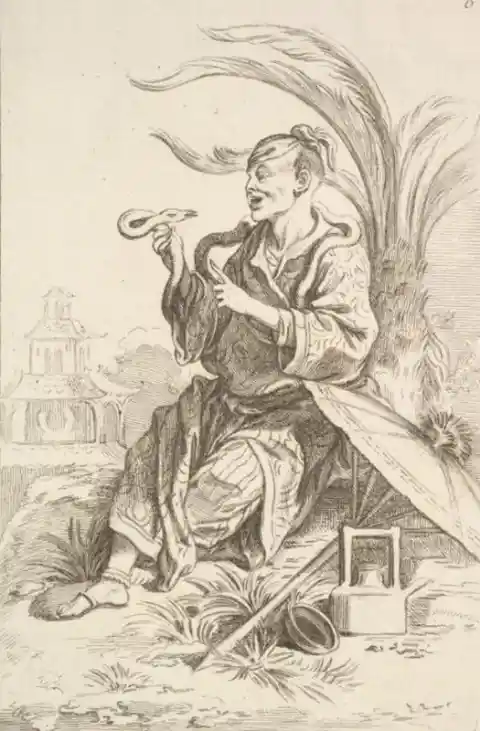
The method was simple: Cut open a python, slather the snake soup onto genital ulcers. Why not, right? That was the attitude of Chinese practitioners who wanted to help women with ailments below the belt. Did it hurt? And who caught the snake? Questions remain. And so did the ulcers, with this crazy idea!
Animal Testicle Transfers
Goat testicles are two things most people have not given a lot of thought to, in general. But 1920's doctors got a little creative and crazy trying to find a use for these extras lying around. Why not cure male impotence?

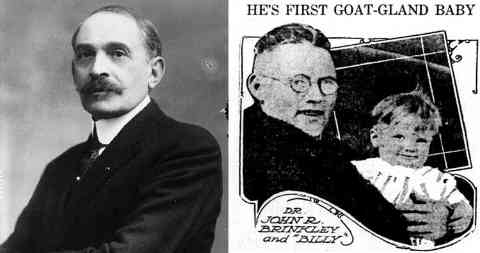
In the 1920's, conman John Brinkley announced that erectile dysfunction called for surgical intervention. Back then, there was no Viagra! So logically, he tried testicle transplantation, goat to man. After becoming very rich through these in-demand surgeries, man and goat were pretty sad at the end. It was all a fraud, tragically!
Tampax, Earthy Edition
Women used pads long before any catchy commercials told them to. It's just logical! But unlike today, these sanitary items used to be made of much less predictable material. Anyone a fan of moss?


Feminine hygiene products were never easy to come by, historically. Though it's hard to understand today, it was one reason that women could not easily pursue all economic opportunities. Using moss to soak up the mess was not totally effective, out in public. And the infections must have been rampant! But ladies did what they could. Good job, ladies.
Rat Poison Hair Removal
For hair removal, it's just been hard to settle on one tried and true method. After all, it keeps growing back! During Elizabethan times, people tried homemade creams. Recipes suggested deadly poison. The perfect burn, it was not!
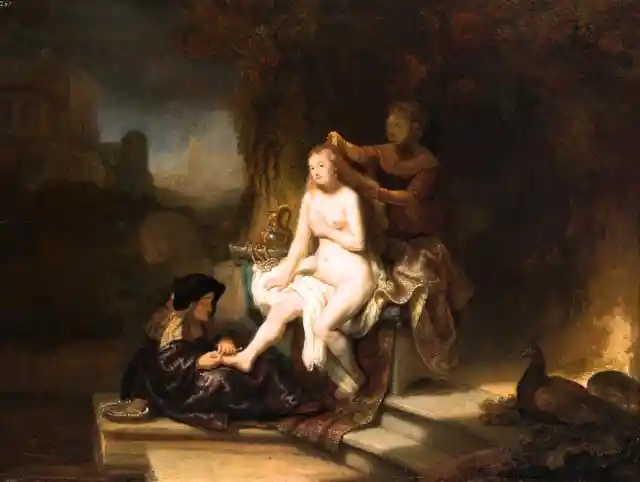

One 1532 guide read: “Boil together a solution of one pint of arsenic & an eighth of a pint of quicklime.” This was smeared over the legs until the skin felt literally hot. Then. water was used to wash away the toxic solution, fast. Shaving may be a tedious part of the feminine routine today, but scraping is surely better than this!
Medicinal Cannibalism to the Rescue
17th-century European nobility suffered from chronic and deadly ailments, just like everyone else. But rich folks had more options to tackle their troubles. Exotic options, even. For example, rich people tried dead people!

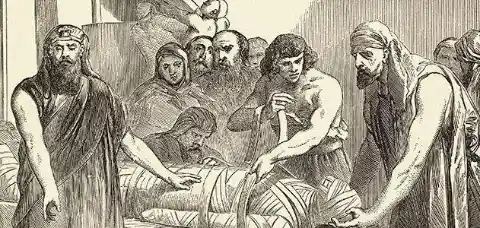
That's right, human corpses. But why? Well, medicinal cannibalism was believed to be a real treatment in Renaissance Europe. The wealthy paid big bucks to dig up Egyptian mummies, and they even robbed Irish graves. Not only did they eat these decayed bodies, but they also made innovative potions and creams. Epilepsy and nosebleeds continued, however. Surprise, surprise!